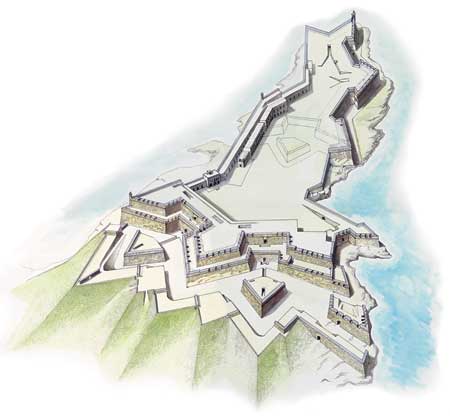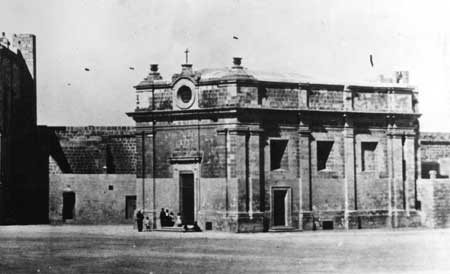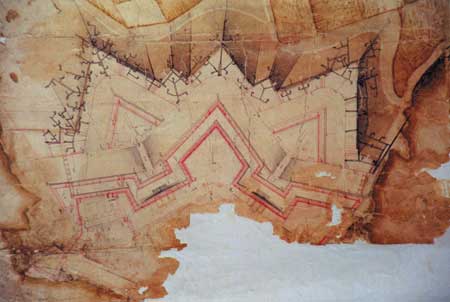.jpg) |
|
Detail of Valperga's scheme of 1670 showing Fort Ricasoli.
|
Between 1622 and 1629, the Order constructed a small tower at the tip of the peninsula on the eastern side of the mouth of the Grand Harbour – the place known as Gallows Point. They called this tower St Petronius although the native Maltese referred to it as Torri Teftef. However this tower was too small to serve any effective defensive purposes and so a fort made up of seven sturdy bastions was designed by Maurizio Valperga. In June 1670 construction began on the fort that was to be named after the Knight Giovanni Francesco Ricasoli who donated 20 000 scudi to meet the expense.
Although extensively mined, armed, and fitted with artillery, in 1698 Fort Ricasoli was still considered a weak fort. Furthermore its exposure to the heavy seas led to the rapid deterioration of its walls so that by 1752 they were in urgent need of intermittent repair and renovation.
In 1807 the British stationed the Frobeck Regiment, probably including Albanian soldiers, within this fort. A few years later some soldiers mutinied, turning the guns on Valletta and exploding the gun powder store. The perpetrators were eventually court-martialled and sentenced to death by firing squad.
 |
|
General aerial view of Fort Ricasoli c. 1798
|
On the 3rd November 1827, the fort was turned into a hospital and catered for the sick and wounded that were brought from Navarino. Later, on the 9th June 1837, Governor Bouverie turned it into an isolation station for those hit by the ‘korbus’ cholera. All inmates succumbed to this plague and were buried outside the fort – in the place now known as Wied G
ħammieq Cemetry.
The British strengthened Fort Ricasoli by constructing several casements for heavy guns, gun turrets, emplacements, and barracks. By 1870 it contained over 100 guns facing the sea and a 700 strong garrison.
The fort played an important role during the Second World War and was bombed on several occasions. After the war it continued to be used as a naval barracks for a few years until it was handed over to the Government.
 |
 |
|
Garrison church of St Nicholas
|
18th century plan of the landfront and countermines of Fort Ricasoli
|

